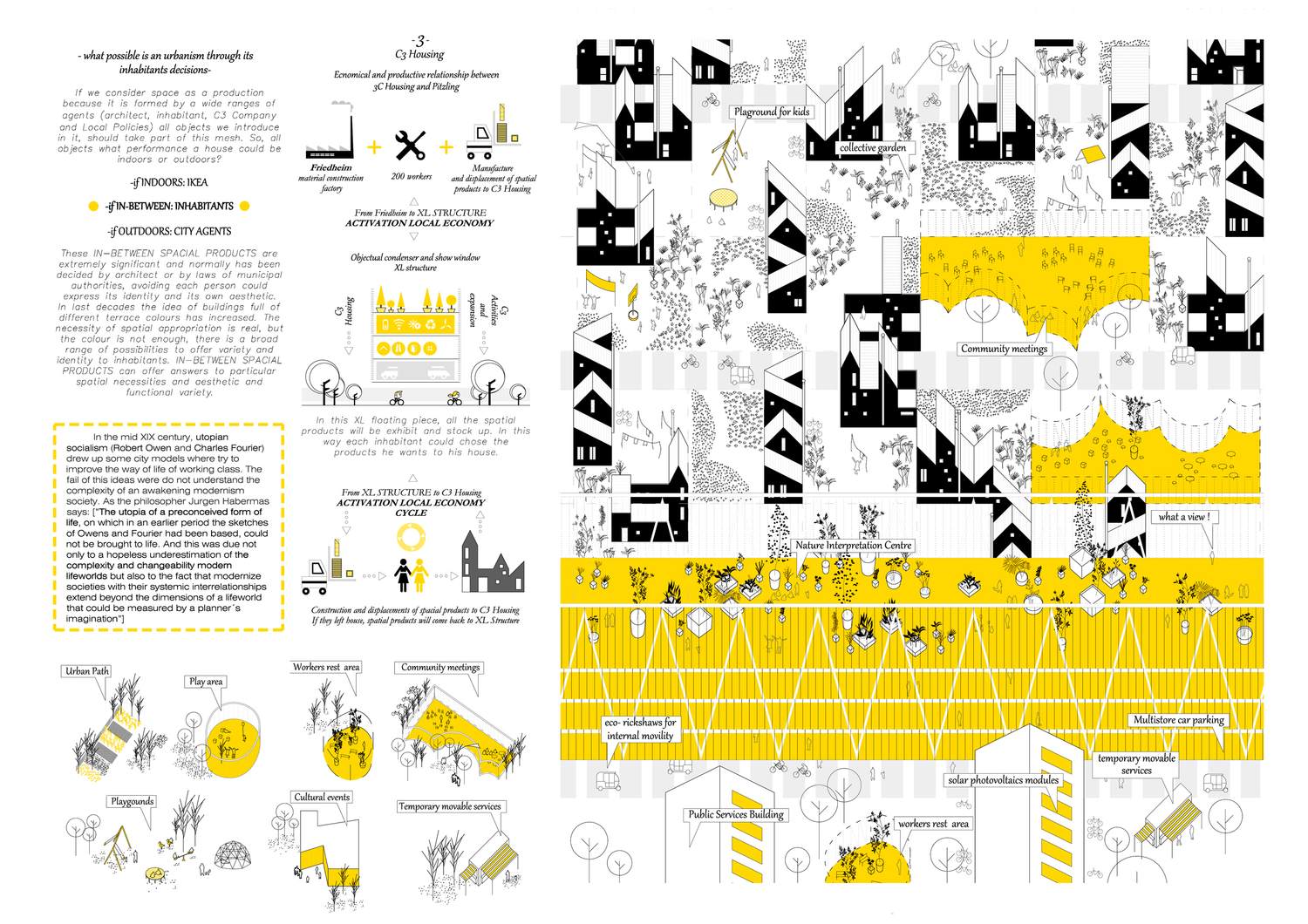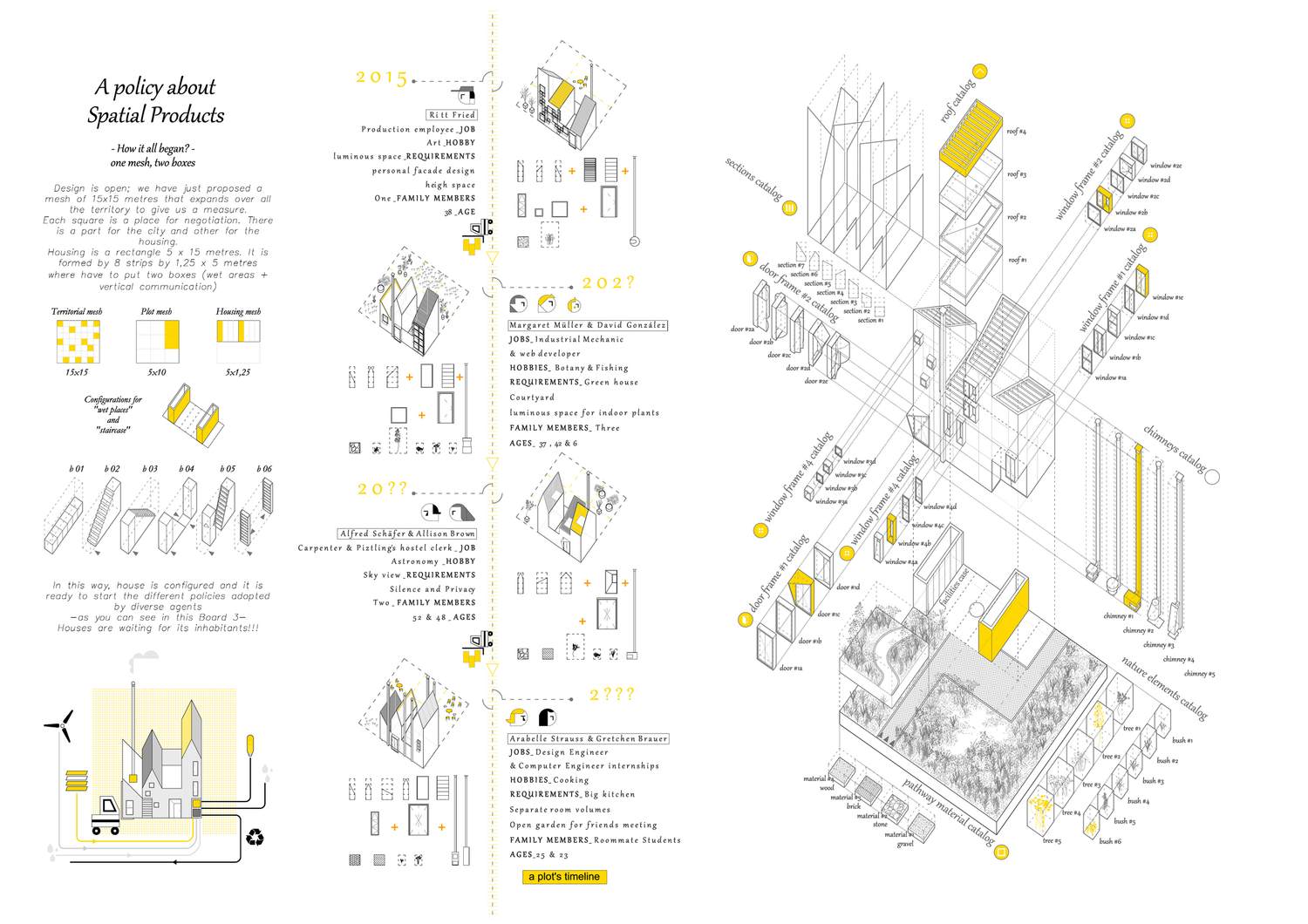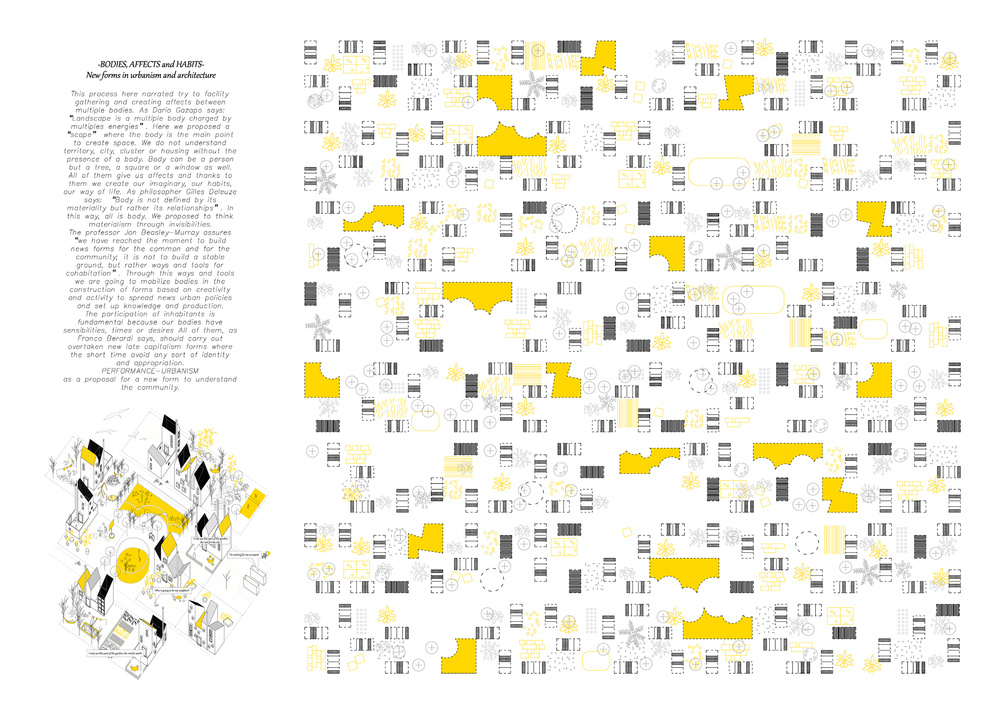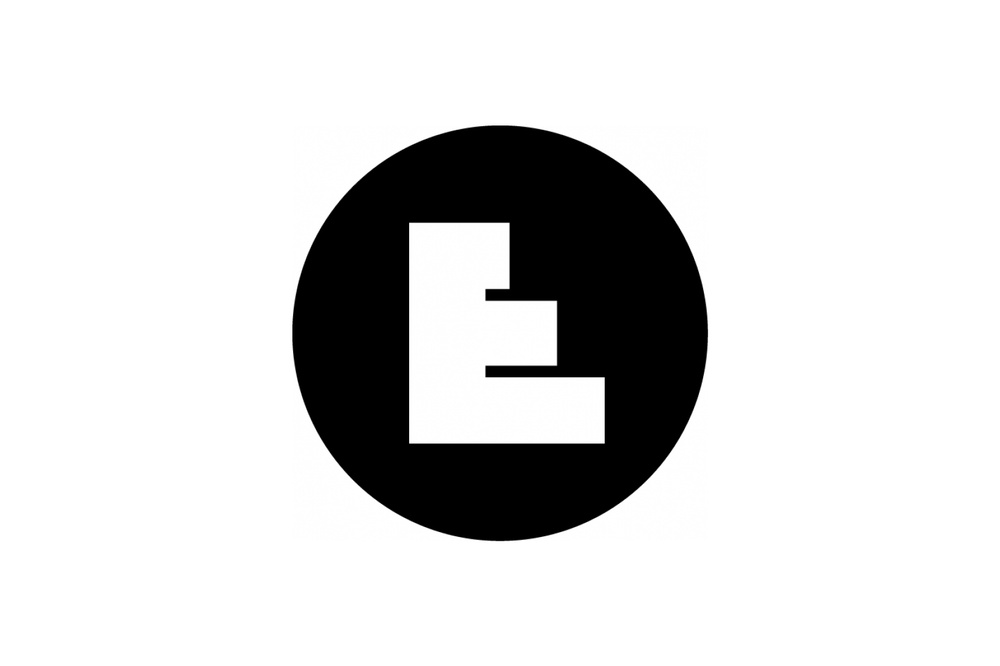
Team: Víctor Cano Ciborro, Irene Brea, José Javier Cullen, Rocío Romero, Carlos Rubio
Site: Landsberg. Germany
Year: 2015
From understanding space as a product because is formed by a wide range of agents (architect, inhabitant, economy and local policies) we propose a self-service City where each person can reflect on its affects and identity in the city. We suggest three types of spatial products (indoors, in-between and outdoors) and we define its owners. “Indoors” is an Ikea monopoly, “Outdoors” is a construction by all agents and we propose the “In-Between” products as an inhabitant decision. This has been normally taken by architect or municipal authorities avoiding each person could express its identity or its own aesthetics.
![]()
In last decades urban design has been though as a grid where flats land in it. These flats are usually full of different terrace colours as an attempt by architects to express this diversity in current world. But it is only decoration, the colour is not enough. We want to express the truth power of architecture as a critical praxis to improve citizens’ life. There is a broad range of possibilities to offer variety and identity to residents and one solution is in IN-BETWEEN SPATIAL PRODUCTS as roofs, windows, doors, chimney ground or garden. They can offer real and functional answers to our body particular necessities, affects and desires. In this way, citizens not only participate in common space but rather in houses that are as changing as could be the public space.
![]()
![]()
![]()
EUROPAN EUROPE 13 - ADAPTABLE CITY II
Official website - europan-europe.eu
It is proposed for Europan 13 to continue with the generic theme of “the adaptable city”: adaption to the need for more sustainable development but adaption also to the context of an economic crisis that the majority of European cities are currently undergoing.
Three generic concepts structure this overall theme:
- Resilience as a challenge: to be able to extend or find again the identity of the city’s structural elements (built or landscaped) in a context of significant changes.
- Social adaptability as a goal: reconciling the coherence of these structures with the evolving uses and practices.
- Economy as a method: managing urban transformations in different contexts of actors and means, yet with limited resources and in the era of the “post-oil city”.
Taking these three themes into account induces changes in the urban and architectural order in the logics of actors (Welfare State Versus Self-Organization), in the contents (Segregation Versus Sharing) but also in the design processes (Object Versus Project (Process)) – see details hereafter. Europan therefore wishes that the sites be confronted to the major challenges concerning the adaptability of
European cities and also propose concrete innovations in the order given by the site representatives, arousing new project approaches by young competitors.
![]()
Site: Landsberg. Germany
Year: 2015
From understanding space as a product because is formed by a wide range of agents (architect, inhabitant, economy and local policies) we propose a self-service City where each person can reflect on its affects and identity in the city. We suggest three types of spatial products (indoors, in-between and outdoors) and we define its owners. “Indoors” is an Ikea monopoly, “Outdoors” is a construction by all agents and we propose the “In-Between” products as an inhabitant decision. This has been normally taken by architect or municipal authorities avoiding each person could express its identity or its own aesthetics.

In last decades urban design has been though as a grid where flats land in it. These flats are usually full of different terrace colours as an attempt by architects to express this diversity in current world. But it is only decoration, the colour is not enough. We want to express the truth power of architecture as a critical praxis to improve citizens’ life. There is a broad range of possibilities to offer variety and identity to residents and one solution is in IN-BETWEEN SPATIAL PRODUCTS as roofs, windows, doors, chimney ground or garden. They can offer real and functional answers to our body particular necessities, affects and desires. In this way, citizens not only participate in common space but rather in houses that are as changing as could be the public space.



EUROPAN EUROPE 13 - ADAPTABLE CITY II
Official website - europan-europe.eu
It is proposed for Europan 13 to continue with the generic theme of “the adaptable city”: adaption to the need for more sustainable development but adaption also to the context of an economic crisis that the majority of European cities are currently undergoing.
Three generic concepts structure this overall theme:
- Resilience as a challenge: to be able to extend or find again the identity of the city’s structural elements (built or landscaped) in a context of significant changes.
- Social adaptability as a goal: reconciling the coherence of these structures with the evolving uses and practices.
- Economy as a method: managing urban transformations in different contexts of actors and means, yet with limited resources and in the era of the “post-oil city”.
Taking these three themes into account induces changes in the urban and architectural order in the logics of actors (Welfare State Versus Self-Organization), in the contents (Segregation Versus Sharing) but also in the design processes (Object Versus Project (Process)) – see details hereafter. Europan therefore wishes that the sites be confronted to the major challenges concerning the adaptability of
European cities and also propose concrete innovations in the order given by the site representatives, arousing new project approaches by young competitors.
